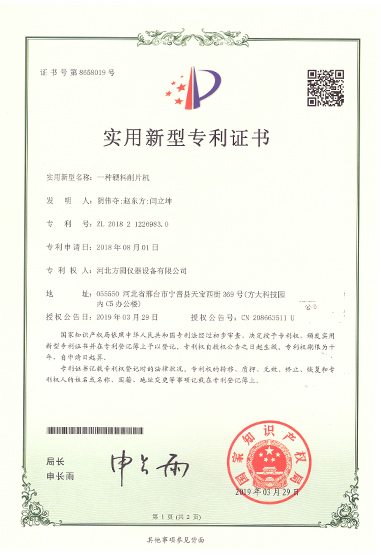Universal Tensile Testing Machine for Material Strength Evaluation and Quality Control
Understanding the Universal Tensile Tester Machine
In the realm of material science and engineering, the universal tensile tester machine stands as a pivotal tool for evaluating the mechanical properties of materials. It is primarily used to determine a material’s strength, ductility, and other essential characteristics, making it indispensable in research and quality control across various industries, including manufacturing, construction, and aerospace.
What is a Universal Tensile Tester?
A universal tensile tester, often referred to as a universal testing machine (UTM), is designed to apply a controlled tensile force to a specimen and measure the response of the material. The machine typically consists of a loading frame, control system, and instrumentation for data acquisition. It can perform a variety of tests, including tensile, compression, bending, and shear tests, making it versatile for different applications.
The key components of a universal tensile tester include 1. Loading Frame This sturdy structure supports the specimen during testing and houses the actuation system, which applies the tensile force. 2. Grips These hold the specimen securely in place during the test and can accommodate a variety of shapes and sizes of materials. 3. Load Cell A critical element that measures the force exerted on the specimen and converts this force into an electrical signal for data recording. 4. Displacement Sensor This measures the elongation or deformation of the specimen under load, allowing for the calculation of strain. 5. Control System Often computerized, this system allows for precise control of the testing procedure and can automate data collection and analysis.
Importance of Tensile Testing
universal tensile tester machine

Tensile testing provides essential data that highlights how materials behave under stress. By measuring parameters such as yield strength, ultimate tensile strength, elongation, and reduction of area, engineers can assess the suitability of materials for specific applications. For instance, materials that exhibit high strength and ductility are favored for construction, while lightweight materials with good tensile performance are sought in the aerospace industry.
Moreover, tensile testing is crucial for quality control. Manufacturing processes can introduce variations in material properties, and regular tensile testing ensures that the materials produced meet necessary specifications and standards. This helps to minimize failure risks in real-world applications, where material integrity is vital.
Testing Procedure
The tensile testing process generally involves several steps 1. Preparation The specimen is prepared according to standardized dimensions and shapes, ensuring consistency across tests. 2. Fixture Setup The specimen is securely attached to the machine’s grips, ensuring that it is aligned properly to prevent premature failure. 3. Initialization The machine is calibrated, and the testing parameters are set, including the rate of loading and maximum load. 4. Execution The tensile test is conducted, during which the machine gradually applies the load while continuously recording the force and displacement. 5. Data Analysis After the specimen has failed, the collected data is analyzed to produce stress-strain curves, which provide insights into the material’s properties.
Conclusion
The universal tensile tester machine is an integral component of material testing in modern engineering practices. By enabling the assessment of key mechanical properties, it not only supports the innovation of new materials but also ensures that existing materials meet industry standards. As technology advances, these machines are becoming increasingly sophisticated, with enhanced capabilities for automation, accuracy, and data analysis. Understanding and utilizing the universal tensile tester is essential for engineers and researchers committed to ensuring the reliability and safety of materials in diverse applications.
-
Why the Conductor Resistance Constant Temperature Measurement Machine Redefines Precision
NewsJun.20,2025
-
Reliable Testing Starts Here: Why the High Insulation Resistance Measuring Instrument Is a Must-Have
NewsJun.20,2025
-
Flexible Cable Flexing Test Equipment: The Precision Standard for Cable Durability and Performance Testing
NewsJun.20,2025
-
Digital Measurement Projector: Precision Visualization for Modern Manufacturing
NewsJun.20,2025
-
Computer Control Electronic Tensile Tester: Precision and Power for the Modern Metal Industry
NewsJun.20,2025
-
Cable Spark Tester: Your Ultimate Insulation Assurance for Wire and Cable Testing
NewsJun.20,2025
 Copyright © 2025 Hebei Fangyuan Instrument & Equipment Co.,Ltd. All Rights Reserved. Sitemap | Privacy Policy
Copyright © 2025 Hebei Fangyuan Instrument & Equipment Co.,Ltd. All Rights Reserved. Sitemap | Privacy Policy
